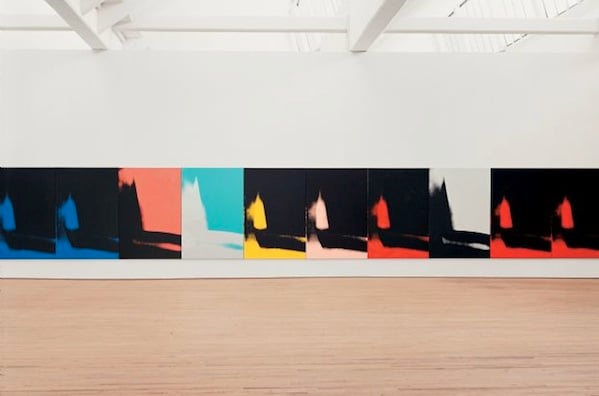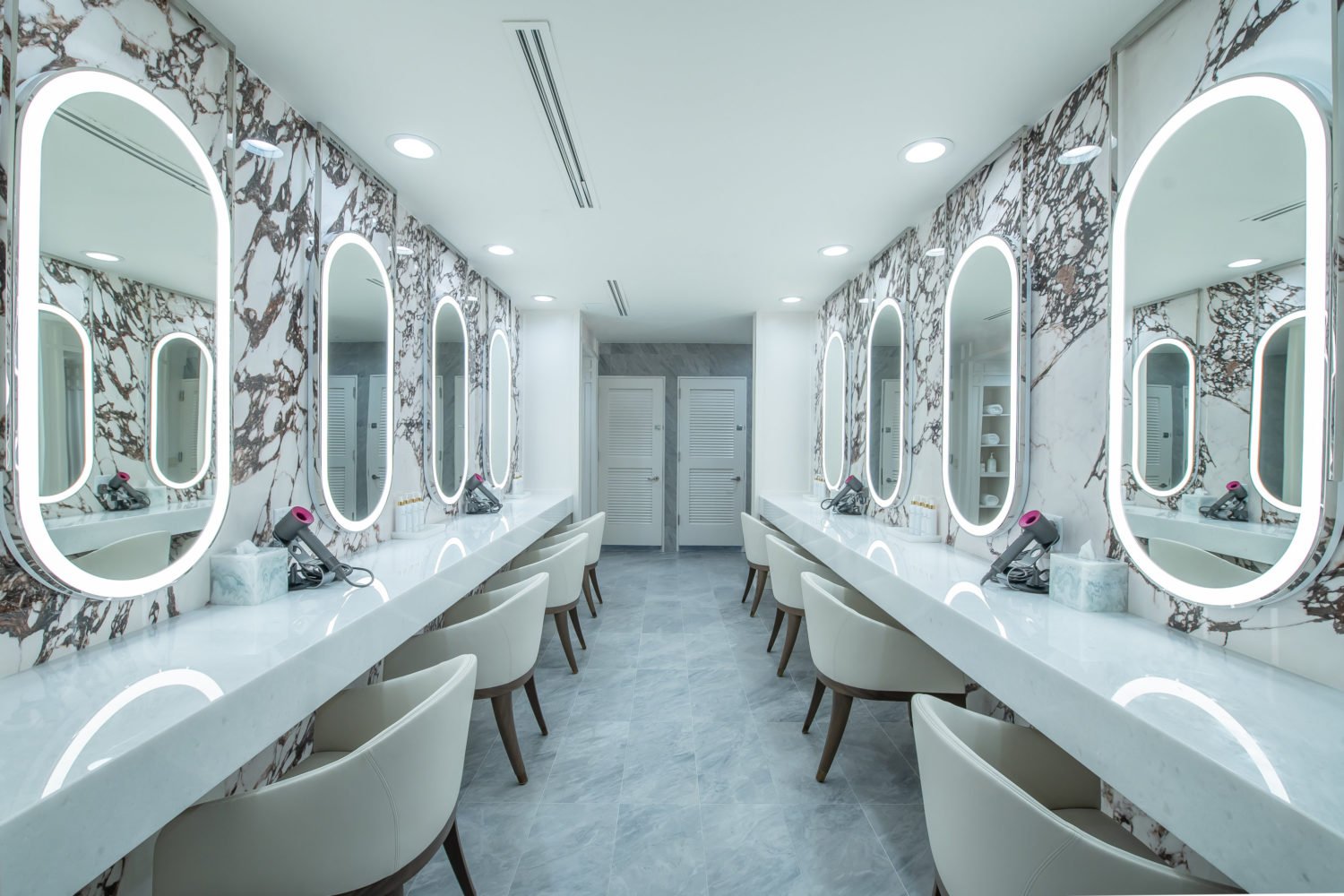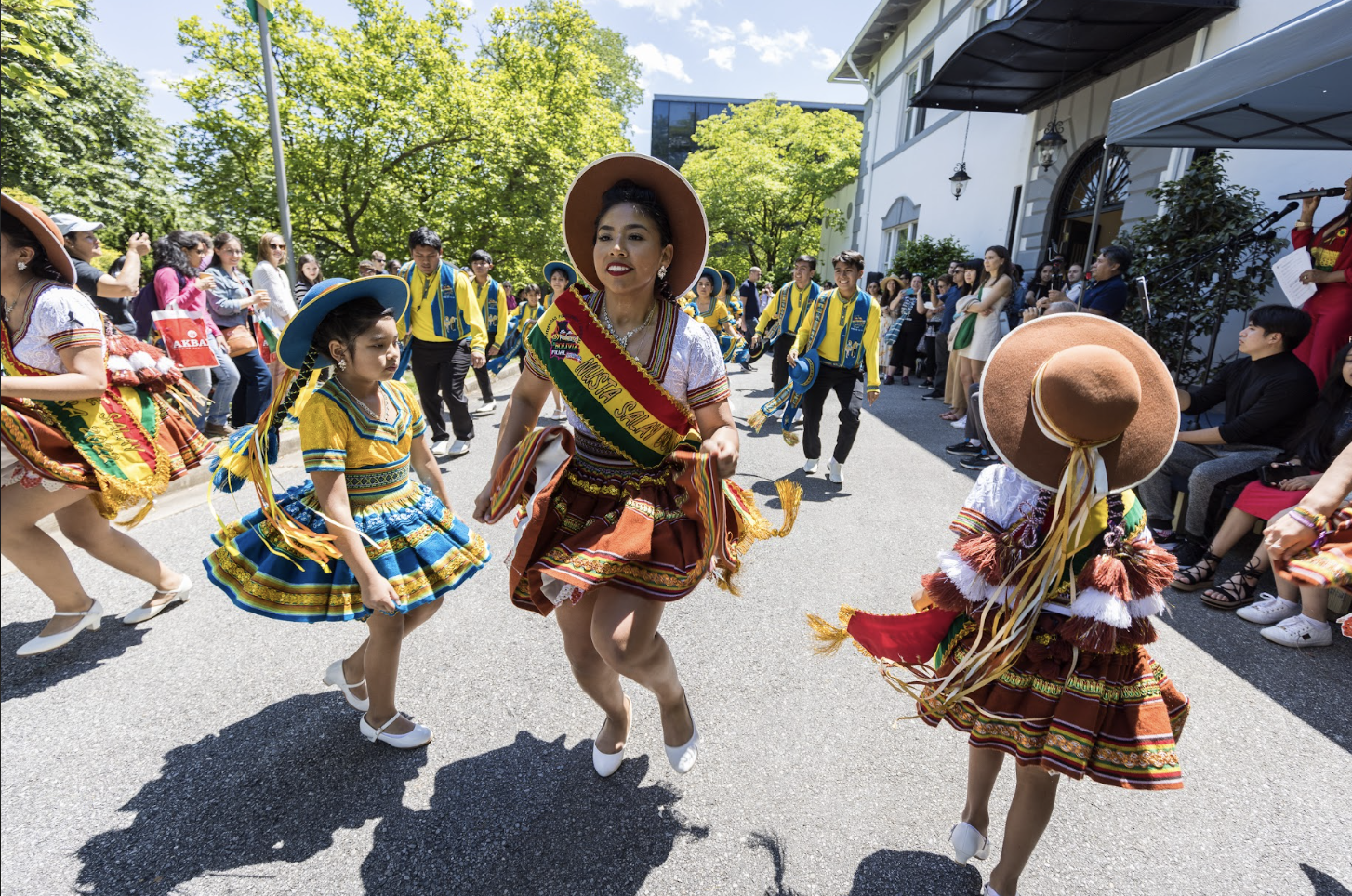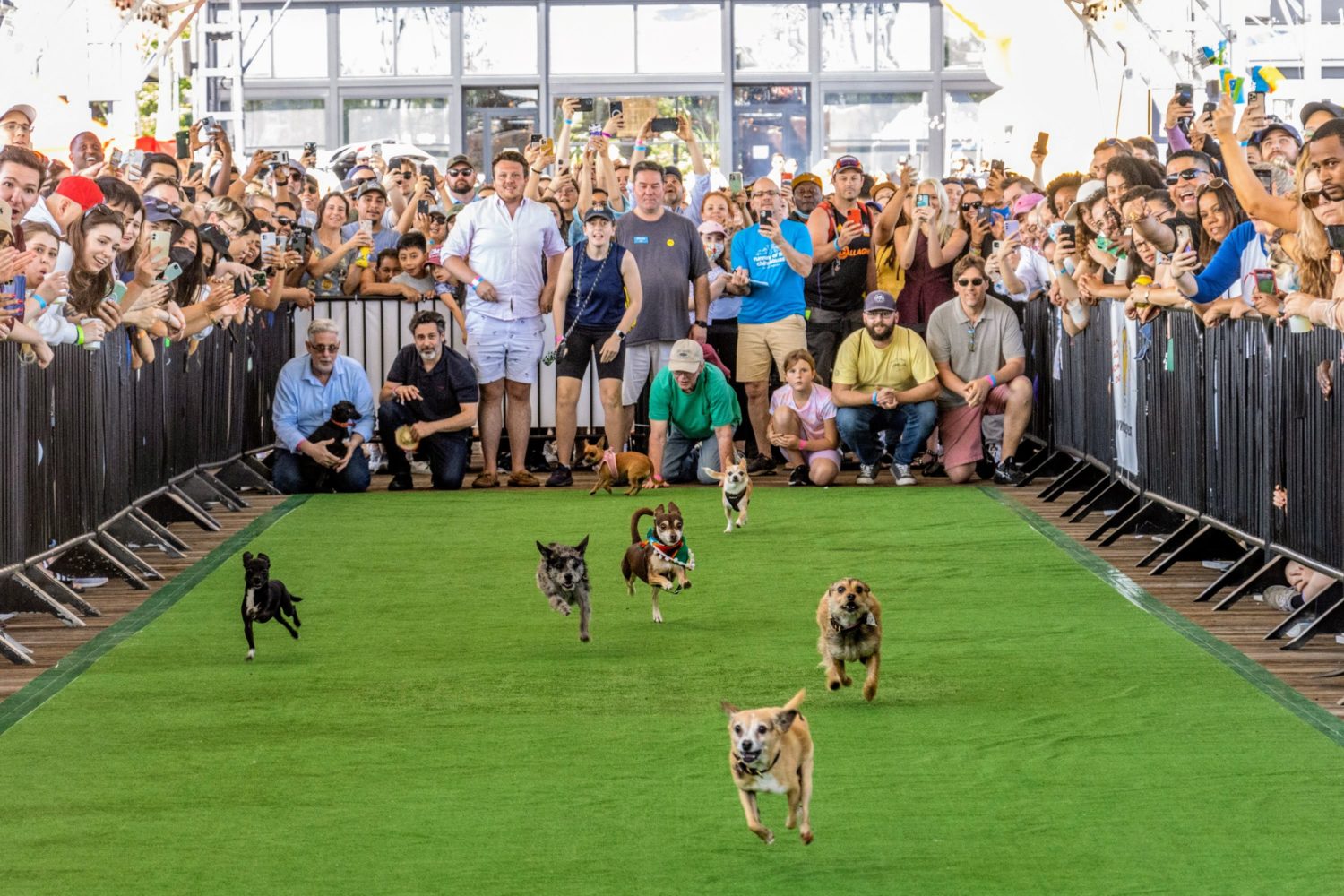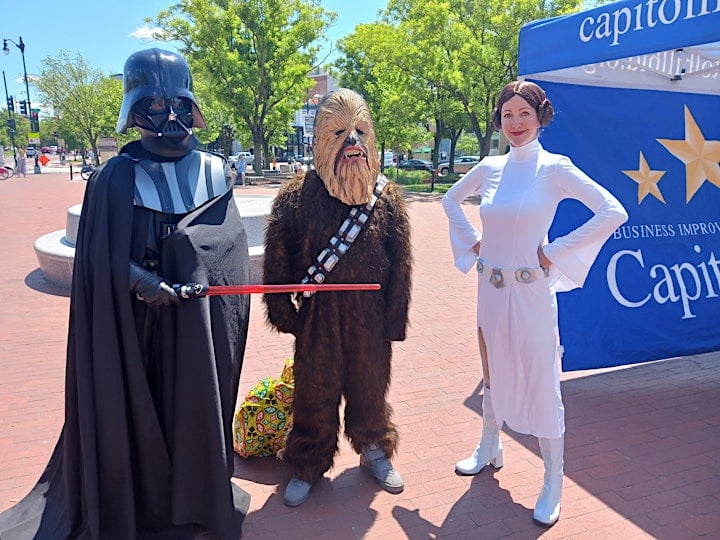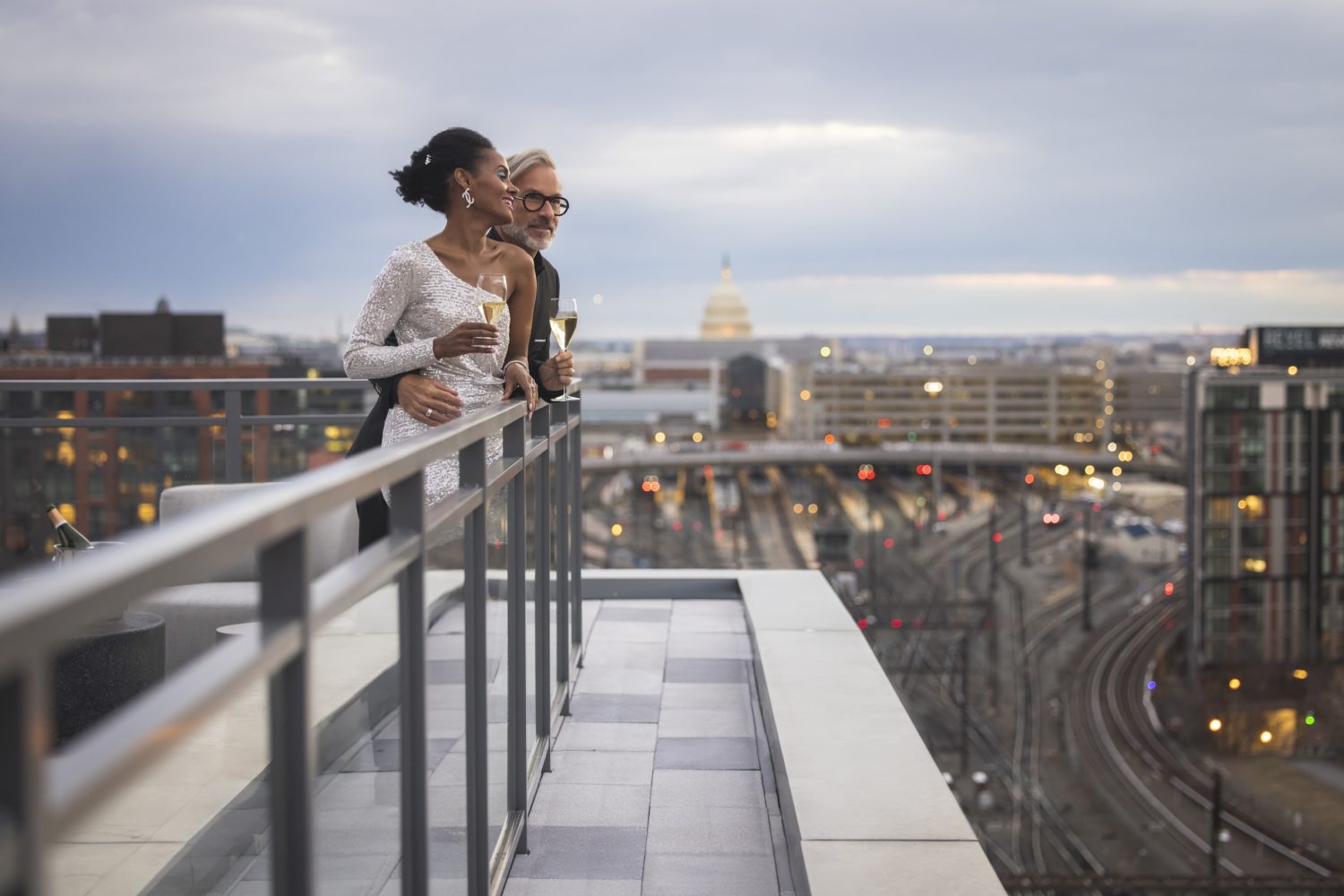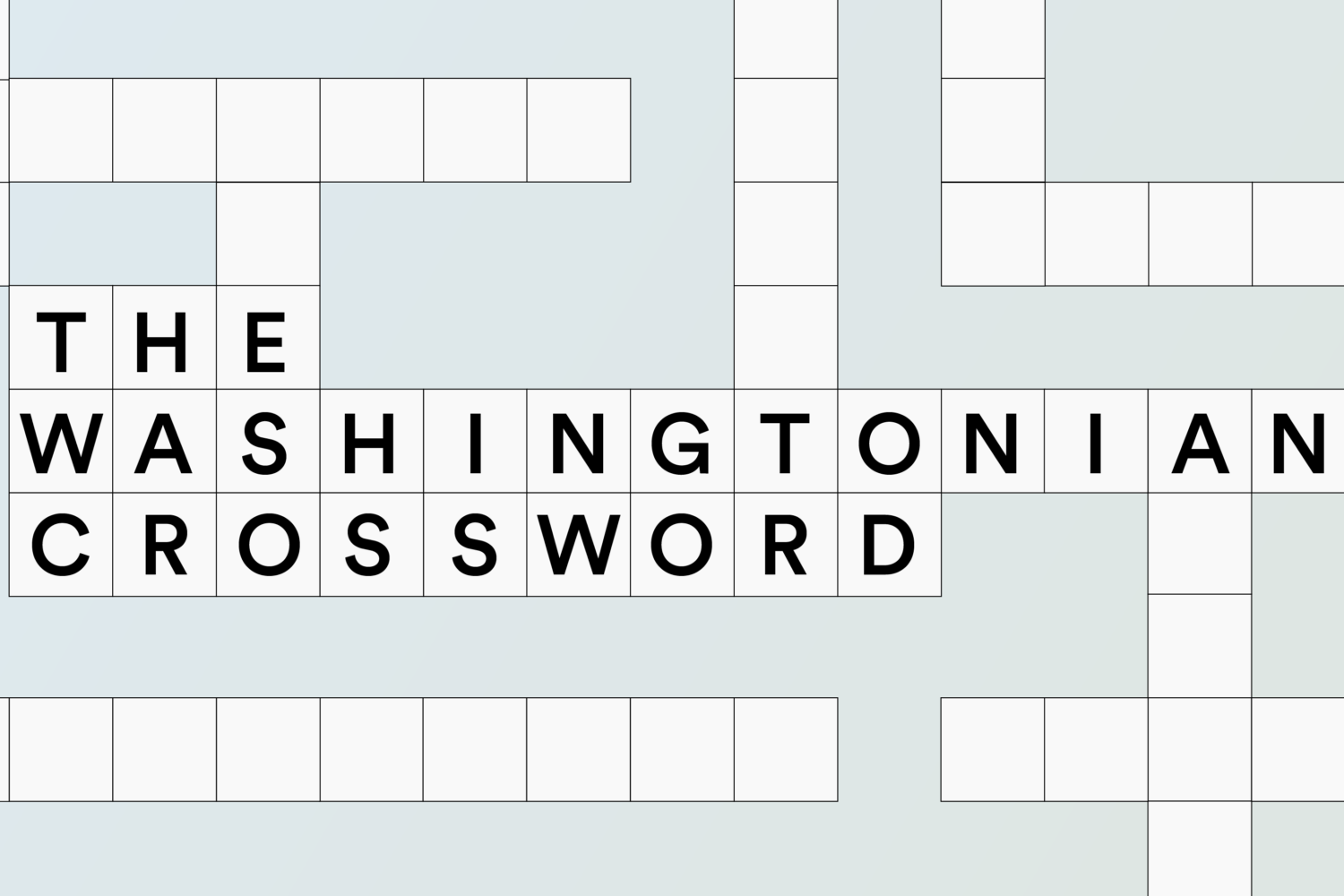Andy Warhol’s “Shadows” revives a 1979 show by the iconic artist. Photograph by Bill Jacobson, courtesy of the Hirshhorn Museum
“I always like to see if the art across the street is better than mine,” said Andy Warhol in 1979, in a New York Times piece about his newest exhibition, an 83-part painting titled “Shadows.” In Washington this weekend, the art across the street is Warhol’s, too—he’s the subject of two radically different exhibitions in different museums on the National Mall. At the National Gallery, “Warhol: Headlines” is a multi-faceted, almost theatrical look at Warhol’s obsession with fame and the media, while on the other side of the mall, the Hirshhorn Museum displays Shadows—one work, 102 different panels—in its entirety for the very first time.
While “Headlines” is all about the flashy, flamboyant style most people associate with Warhol, “Andy Warhol: Shadows” is anything but. The work comes from the Dia Art Foundation in New York, where the different panels are usually displayed in a large, square gallery. Not so at the Hirshhorn, whose undulating, circular second-floor gallery seems tailor-made for the exhibit. Walking in, you’re confronted with a quartet of Warhol self-portraits in electric blue, and a seemingly endless road of color.
The curved slope of the wall means you’re unable to see all 102 panels at the same time, with the various elements seeming to stretch on into infinity. The effect is not unlike gazing into a room filled with mirrors—you get the sense that there’s something otherworldly just out of sight. During the first “Shadows” exhibit, at SoHo’s Heiner Friedrich gallery in 1979, the paintings were grouped “randomly” by Warhol’s assistants, but the Hirshhorn arrangement (which aims to mimic the original presentation) feels a lot more deliberate. The first set of panels are vividly colored, before settling into a more muted, contemplative state, with groups of similar colors hung together. You can sense the end of the 450-foot work before it appears, thanks to the hazy blue glow of a recently acquired Dan Flavin installation, which radiates an electric energy from the room next door.
“Shadows” was created in the last decade of Warhol’s life, so it’s tempting to read this as a kind of metaphor, with the vibrancy of the early panels, and the deep thoughtfulness of the panels as a whole, followed by the uncertainty of the blue light permeating the work’s end. Whatever it means (Warhol was deeply flippant about the series, stating, “Someone asked me if I thought they were art and I said no . . . disco decor”), it’s a remarkable experience to behold. Each panel is hard to study individually—they’re supposedly different screen prints of the same shadowy photograph, painted with a mop, of all things—but the collective ensemble is breathtaking, and a much quieter, more insightful look at a truly unique talent.
“Any Warhol: Shadows” is at the Hirshhorn Museum and Sculpture Garden September 25 through January 15. For more information, visit the Hirshhorn’s Web site.

